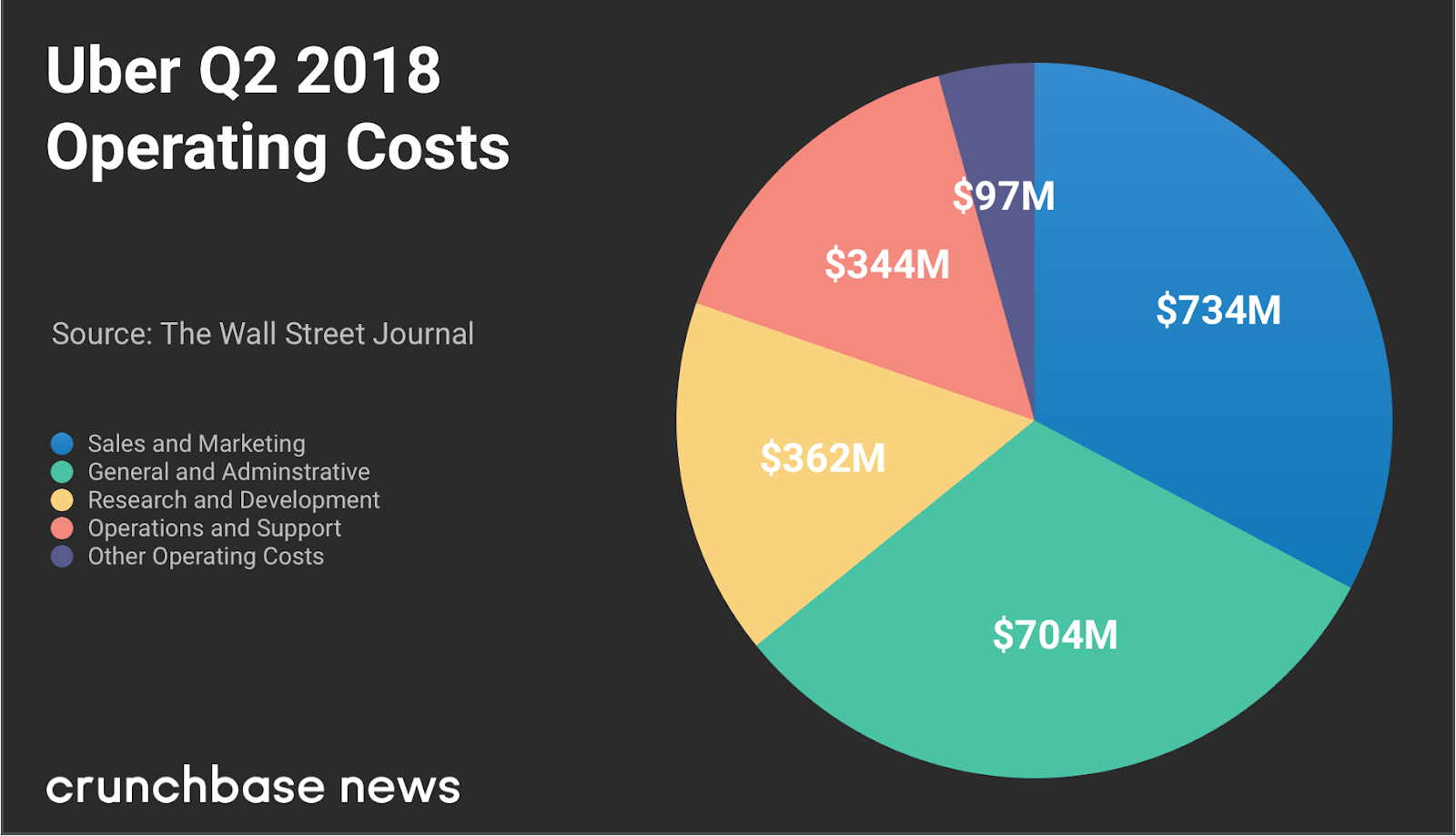Uber’s a huge company. Coming from nowhere, it helped rip up and rewrite the rules for intra-city transit. The company, along with Lyft in the United States, have written themselves and their ride sharing business model into culture.
But while Uber is famous for huge growth, towering revenues, and enormous fundraising, something that most don’t know is that Uber loses money. A lot of it.
So much, in fact, that its IPO timing is a question mark, its eventual valuation a mystery, and there have been nagging concerns throughout Uber’s recent life as to whether it can ever make money. Or if it can while supporting its more exotic operations (Uber Eats loses money, self-driving cars aren’t cheap, and what’s this about helicopters?).
So, today, we’re going to explain how Uber loses money. After all, the company is famous for being asset-light. By that we mean that Uber’s non-employee drives own their cars, and pay for their own gas, and cover most insurance costs.
If Uber isn’t operating a huge fleet of cars, how can it possibly lose money? Let’s find out.
Losses
Today we’re looking at Uber’s second quarter 2018 numbers. If you want to follow along at home, we’re leaning on this compilation of Uber figures put together by the Wall Street Journal.
Why focus on the the company’s second quarter? Because we have yet to see Uber’s third quarter figures, and the company’s first quarter was impacted by one-time corporate divestments. More simply, the money that Uber got for divesting certain operations makes its first quarter look better than it was.
So, for the second quarter, how much money did Uber lose? Let’s find out:
- Uber’s Q2’2018 adjusted EBITDA (a very relaxed profit metric that doesn’t count all costs): -$614 million.
- Uber’s Q2’2018 non-GAAP profit (the company’s net loss, not including the cost of share-based compensation): -$870 million.
- Uber’s Q2’2018 net loss (the company’s profit or loss, inclusive of all costs): -$891 million.
In Uber’s case, the stricter the profit metric (the more costs the profit metric takes into account), the worse its quarterly loss. That makes sense!
What you should take away from the above is that no matter which profit metric we decide on, be it net loss or adjusted EBITDA, Uber loses a pile of money each quarter.
How
Now that we understand that Uber does lose money, we want to know how it manages the task.
To understand, we’ll start with fares and work our way through the company’s costs. So up first? Gross bookings, or the value of all rides on Uber’s platform. In the second quarter of 2018, Uber’s gross bookings totaled $12 billion. That’s a lot of money!
However, Uber doesn’t get to keep most of it. In fact, a lot of things need to come out of gross bookings before we can figure out Uber’s own revenue. The largest gross bookings cost is what Uber drivers make. In the second quarter, $8.2 billion of the $12 billion in bookings Uber pulled in went to drivers.
Uber also spent $142 million on promotions in the second quarter, paid drivers another $427 million in incentives, spent $27 million on refunds, and paid $411 million in taxes and the like. All told, according to the Wall Street Journal chart, Uber’s $12 billion of gross bookings included $9.2 billion in so-called “contra-revenue” expenses.
Now we can figure out Uber’s real second quarter revenue: $12 billion (gross bookings) minus $9.2 billion (contra-revenue expenses) equals $2.8 billion in net revenue for Uber. This is the money it takes in the door, from which we’ll deduct Uber’s cost of revenue (what it costs to deliver product), its operating costs (salaries, office space), and other expenses to determine where all the money went. (Recall that we are trying to understand why Uber loses money; there is no profit at the bottom of this well.)
So Uber has $2.8 billion in Q2 revenue to spend on itself. Its cost of revenue came to $1.3 billion, leaving $1.5 billion in gross profit for the company to use to pay for its operating costs (for more on income statements, check out this post).
Are Uber’s operating costs greater than its gross profit? Here are the ridesharing company’s costs from its business operations:

So does that chart of costs sum to more than its gross profit of $1.5 billion? Yes. Uber’s operating costs come to a total of $2.2 billion. And as Uber’s costs are $700 million greater than its available gross profit, it loses money.
In English, the money that Uber collects from fares isn’t enough to pay for its revenue and operating costs; therefore, Uber loses money each quarter.
How much money the company loses depends on how you count costs and if you take into account non-cash costs (such as stock compensation). But, by every possible “real” profit metric, Uber is deeply unprofitable.
And that’s simply due to it having a higher cost base than it does revenue generating capacity. Now you know!
Editorial note: The original version of this post was more a loose series of notes. I decided to make it clearer and better. This is the improved version.

Stay up to date with recent funding rounds, acquisitions, and more with the Crunchbase Daily.




![Illustration of a man sitting on a huge pile o' money. [Dom Guzman]](https://news.crunchbase.com/wp-content/uploads/Giant_Funding-470x352.jpg)




![Illustration of remote meet on cellphone, unicorn chess piece and money. [Dom Guzman]](https://news.crunchbase.com/wp-content/uploads/business-strategy-300x168.jpg)
![Illustration of toast with $ toasted in. [Dom Guzman]](https://news.crunchbase.com/wp-content/uploads/Forecast-dollar-sign-300x168.jpg)
67.1K Followers